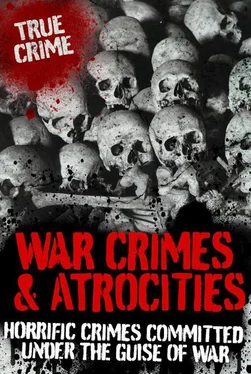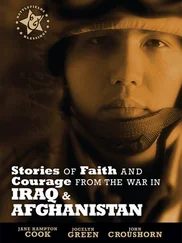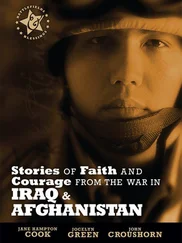Israel and the Occupied Territories
2000–2006

Under the terms of the Geneva Convention, article number 54:
Starvation of civilians as a method of warfare is prohibited.
As is:
…to attack, destroy, remove or render useless objects indispensable to the survival of the civilian population.
According to the above, the Israeli army’s latest offensive in the Occupied Territories amounts to them having committed serious war crimes. We all have a general idea of what we think a war crime is, but there are many different degrees of heinousness with which they are carried out. War crimes are among the most serious crimes under international law and represent offences against humanity as a whole. Perhaps the prime example of crimes against humanity is what Hitler and the Nazis did to the Jewish people during World War II, and that is what the UN Human Rights Commission have determined the Israelis are currently doing to the Palestinian people.
Since the start of the Al-Aqsa Intifada, which is the wave of violence that began in September 2000 between Palestinian Arabs and Israelis, the world has witnessed almost on a day-to-day basis, the injustices against the Palestinian people living in occupied Palestine. During this period the Israeli army have killed more than 700 Palestinians, including as many as 150 children. Nearly every one of these killings was unlawful – either by shooting, shelling or air raids on civilian residential areas; unauthorized executions; or as a result of the use of excessive force.
Following the harsh restrictions imposed by the Israelis on the movement of Palestinians within the Occupied Territories, the Palestinians have suffered widespread poverty and unemployment, and access to health and educational facilities has been hampered. On top of this, the Israelis have destroyed hundreds, if not thousands, of Palestinian homes, a large majority of their agricultural land and much of the basic foundations of their society.
LIVING IN THE SHADOW OF A WALL
The Israelis have continued to expand their territory and illegal settlements, and they restricted the Palestinians’ movement even further by the erection of the Israeli West Bank barrier in June 2002. The majority of the barrier was constructed of a network of fences with vehicle/barrier trenches and up to 8-m (26-ft) high concrete walls. In addition to the concrete wall and fencing materials used in the construction of the structure, sections of the barrier included electrified fencing, 2-m (6H-ft) deep trenches, roads for patrol vehicles, electronic ground/fence sensors, thermal imaging and video cameras, unmanned aerial vehicles, sniper towers and razor wire. It is located partly within the West Bank and partly along the border between the West Bank and Israel proper.
The barrier is a controversial project, with supporters claiming on the one hand that it is a necessary tool for protecting Israeli citizens from Palestian terrorism. On the other hand, opponents claim that it is an illegal attempt to expropriate Palestian land under the guise of security.
In 2006, the building of the wall in the Occupied Territories reached a critical stage. The completed sections of the wall have already caused considerable suffering to the Palestinian population. Homes have been demolished, thousands of olive trees uprooted, acres upon acres of land have been expropriated and roads have been destroyed to make may for the construction. If the Israelis are permitted to continue building the wall, much greater hardships and undue suffering lie ahead for the Palestinian population.
ATTACK ON THE GAZA STRIP
Following the abduction of Israel Defence Forces (IDF) soldier, Galid Shalit, by the Palestinians, the Israelis once again violated humanitarian law and attacked the Gaza Strip on 28 June, 2006. They fired six missiles at the only electrical power plant operating in the Gaza Strip, aiming at the plant’s six transformers. Two of the missiles missed their target on the first attempt, but a few minutes later two more missiles completed the mission.
This attack has had major and long-term humanitarian consequences for the 1.5 million inhabitants of the Gaza Strip. The majority of the inhabitants have been forced to live without electricity in the fierce summer heat, and the harsh effects of the attack continue to be felt in all areas of their life. As a result of the lack of electricity, medical services provided by clinics and hospitals have declined drastically. Most of the people only have access to water for two to three hours a day and the sewage system is on the verge of collapse. Those residents with limited mobility have struggled due to the fact that the majority of the lifts in the buildings do not function and the lack of refrigeration has exposed many people to the risk of food poisoning. Small businesses, who rely on a steady supply of electricity, have been hit hard and the economy is now in a poor state.
The Israelis launched ‘Operation Summer Rain’ overnight in the southern sector of the Gaza Strip, with the primary mission of finding the captured soldier, Shalit. They began house-to-house searches in the area, and bulldozers moved in to clear the way of mines and bombs. The IDF moved into the area, taking up strategic positions at the now nonfunctional Gaza International Aiport in the south-eastern corner of Gaza. The Israelis scoured the Gaza–Israeli border for more tunnel entrances like the ones used to adjuct Shalit, and an IDF spokesman said, ‘We will stay here as long as necessary until we return with the kidnapped IDF soldier’.
In an effort to have some bargaining power, the Israeli military detained more than 64 Hamas officials and parliamentary officials in overnight raids across the West Bank. The detained ministers included Finance Minister Omar Abdel Razeq, Social Affairs Minister Fakhri Torokma, Prisoners’ Affairs Minister, Wasfi Kabha and Deputy Prime Minister and Education Minister Nasser Shair.
The Israeli airforce staged mock air raids over Gaza, causing sonic booms that caused mass panic among the civilians. They also dropped leaflets urging the residents to avoid moving around in the area because of impending military activity. Nervous civilians stockpiled batteries and candles, as well as food and water, expecting the worst. In southern Gaza, at the Rafah crossing with Egypt, which had been closed since the capture of Shalit, militants blew a large hole in the border wall. Palestinian security forces immediately formed a human cordon to stop people from pushing their way through the gap, and a curfew was imposed to further restrict the movements of the inhabitants.
Aiming attacks at civilian objects is forbidden under International Humanitarian law and is considered to be a war crime. The bombing of the Gaza Strip power plant was purely a civilian structure, and it did nothing whatsoever to hamper Palestinian attacks on the Israeli territory. Under international law the Israelis are responsible for the lives and welfare for those people who live on the Gaza Strip, and it is now up to the government of Israel to put things right.
OTHER UNLAWFUL ATTACKS
Over 120 Palestinians have been killed in extrajudicial executions, including more than 30 innocent bystanders, four of whom were children. In September and October 2005, four Palestinian schoolchildren were shot dead by the Israeli army either in their classrooms or walking to school in the Gaza Strip. Raghda Adnan al-Assar and Ghadeer Jaber Mukhaymar, aged ten and nine, were shot dead while they were sitting at their desks in the UN Khan Yunis refugee camp. On 5 October, Israeli soldiers killed 13-year-old Iman al-Hams near her school in Rafab. Witnesses reported that a commander repeatedly shot at the schoolgirl from close range, even though it was obvious she was a child who was obviously scared to death. Although the commander was charge with illegal use of his weapon, he was not charged with either murder or manslaughter.
Читать дальше













